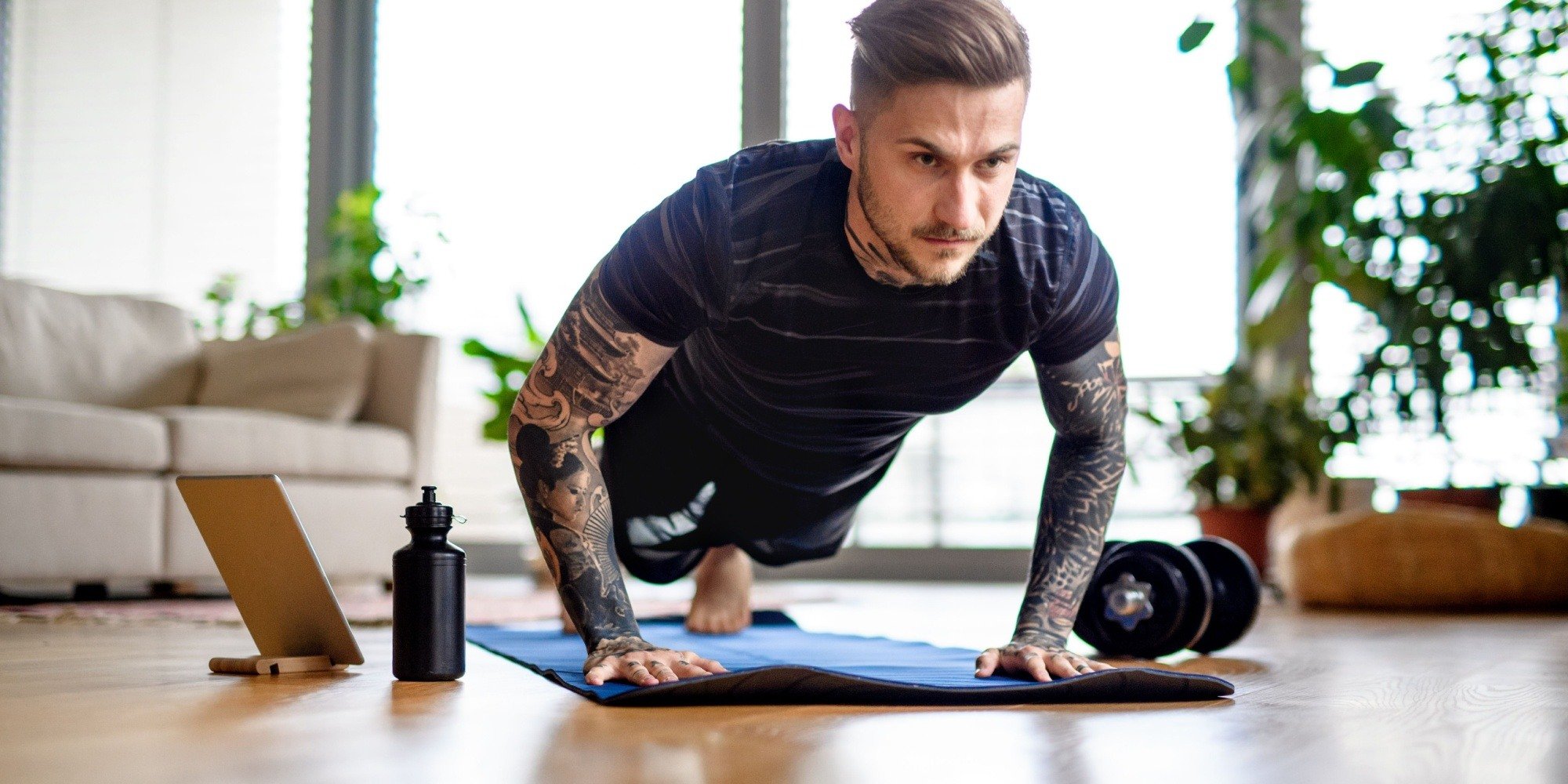What Are the Best Exercises For At Home Workouts?
Oct 28, 2024 mindpumpWhether you don’t have time for the gym or are just sick of getting hit on by the creepy guy who loiters by the Smith Machine, home workouts are the perfect solution. And despite the stigma that they might carry, exercising from home can be just as effective for muscle building as training at a gym. Because, lucky for us, our muscles don’t care where we train them. As long as we give them a proper stimulus, they’ll grow.
In this guide, I’ll take you through a basic approach to training from home. And over time, you can slowly start adding complexity, intensity, and volume to this program. But until then, follow these principles and staple exercises and you’ll be on your way to a body that no one will believe you built without the gym.
Body Weight and Band Exercises
Body Weight Exercises:
Bodyweight exercises form the foundation of a strong at-home workout. They require no equipment and can be performed daily. Key exercises include:
- Squats: Excellent for developing lower body strength and endurance. Variations like sumo squats and jump squats can add intensity.
- Push-ups: Great for upper body strength and core stability. Modify with incline or decline push-ups to target different muscle groups.
- Pull-ups or bodyweight rows: Pull-ups are a classic bodyweight exercise that targets your back, shoulders, and biceps. If you don’t have a pull-up bar, bodyweight rows are a great alternative. Using a sturdy table or suspension straps, you can pull yourself up at an angle, mimicking the movement of a rowing machine while still focusing on your upper back, traps, and rear delts.
Band Workouts:
Resistance bands are versatile and enhance at-home workouts. They are portable and effective for many exercises:
- Rows: Mimic the effects of cable rows at the gym, improving back and bicep strength.
- Presses: Simulate bench presses, working the chest, shoulders, and triceps.
Resistance bands come in different tension levels, allowing for progressive overload and targeted muscle engagement.
Stability Exercises
Pistol Squats and Single-Leg Deadlifts:
Stability exercises improve balance and coordination and support other lifts by building foundational strength:
- Single-Leg Squats: Single-leg squats, also known as pistol squats, are a challenging bodyweight exercise that builds lower-body strength while improving balance and flexibility. Performing this exercise forces each leg to work independently, which helps eliminate strength imbalances. Start by using a chair for support, and as you gain strength and balance, work toward a full range of motion.
- Single-Leg Deadlifts: Focuses on the hamstrings and glutes while challenging balance and core stability.
These exercises strengthen stability and balance, improving performance in traditional squats and deadlifts.
Overhead Carries and Farmer Walks:
These exercises develop stability and strength across the upper body and legs:
- Overhead Carries: Carrying weight overhead while walking or standing challenges shoulder stability and core strength.
- Farmer Walks: Farmer walks are a simple yet highly effective exercise for building grip strength, core stability, and overall body endurance. Hold a heavy object like a pair of dumbbells, kettlebells, or even household items in each hand, and walk for a set distance or time. The focus here is on maintaining proper posture while engaging your core to support the weight.
Including these exercises can enhance overall strength and stability, benefiting other lifts.
Hamstrings
Build hamstring strength at home with:
- Romanian Deadlifts: Use body weight or resistance bands to target the hamstrings and glutes.
- Stability Ball Leg Curls: Use a stability ball to target the hamstrings effectively.
These exercises help maintain balanced leg strength and prevent injuries.
Biceps and Triceps
For biceps, you can perform banded curls or isometric holds using resistance bands to build tension throughout the movement. For triceps, try banded tricep extensions or bodyweight dips using a sturdy surface like a bench or chair. These exercises isolate the arms, adding direct stimulus to these muscle groups beyond the pushing and pulling movements in your routine.
Note: Your biceps and triceps will get plenty of stimulus with your pulling and pressing movements, but feel free to incorporate these isolation movements if you want to add a little more focus to your arm development.
Suspension Training
Versatile Tool:
Suspension trainers, like the TRX system, are highly effective for at-home workouts. They offer:
- Variety: A wide range of exercises targeting different muscle groups.
- Adjustability: Suitable for various fitness levels, from beginners to advanced users.
Suspension training improves strength, balance, and flexibility, making it a valuable addition to any at-home workout.
Additional Tips
Frequency and Consistency:
Regular workouts are essential for seeing results. Consistent exercise, even with basic bodyweight movements, can significantly improve fitness. Aim to incorporate these exercises into your routine several times a week for optimal benefits.
Progression and Modification:
Modify exercises to increase difficulty as you progress. Adjusting intensity and adding variations keeps workouts challenging and effective. Always prioritize safety and proper form to prevent injuries.
Take these fundamentals and apply them into your home exercise routine. With patience, consistency, and hard work you can build a gym body right from the comfort of your living room.







